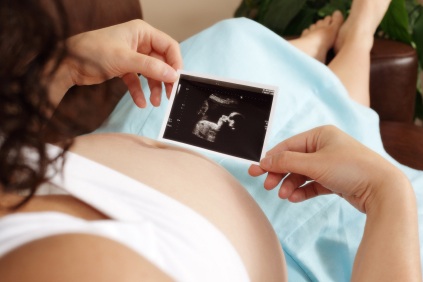Reeta is proud to experience motherhood for the first time. She started breastfeeding within an hour after delivery, as she was aware of the emotional bonding between the mother and baby. I was surprised when she came after seven days and asked for some medicines to reduce the milk formation. Her problem was common, “When I’m feeding from one side, the milk flows from the other side.” It was indeed, very embarrassing and uncomfortable for her.

Initiation into Breastfeeding [Illustration by Shinod AP]
- Antenatal Preparation
The second trimester is considered the best time to start breast feeding. Since the baby starts moving and it becomes easier for the mother to connect with the baby. It is also around this time that the mother starts making preparations for the baby’s arrival.Many mothers ambivalent towards breast feeding will be able to nurse successfully if their obstetrician reassures them about their ability to feed.Pregnant mothers’ breasts are routinely examined from the second trimester onwards. If the obstetrician discovers any abnormality in the nipples, the patient is taught ways to tackle it. For example a retracted nipple can be pulled out to make it become normal. - The First Feed
The child can be breastfed right there in the delivery room within one hour after delivery. It has been observed that the sucking reflex of a new born is at its height 20 to 30 minutes after birth. If the infant is not fed, the reflex diminishes rapidly to reappear adequately 40 hours later.If the infant is put to the breast within half an hour after birth, not only does he respond well, the process also reduces early weight loss. Besides, the antibody content – the colostrum is at its maximum during the first 12 hours after delivery.Early breast feeding also has a physiological effect on the uterus. The suckling of the baby starts the mechanism that helps the uterus to contract and come back to its normal shape.
Nursing soon after delivery has a laxative effect on the meconium, or black stool, that is released in the first two to three days. - Co-operation between mother and child
Each mother infant relationship is unique. There are individual variations. The interaction between the mother and the infant is not a mechanical one. Emotional bonding plays a great role in co-operation between mother and child. The compatibility of mother’s temperament with that of her infant will determine their relationship, and in the first months this includes breastfeeding. - Leaking
In some mothers lack of tone of the sphincter muscles around the milk duct causes a steady leakage. Leaking is strongest when the ejection reflex is active and because the reflex affects both breasts at the same time, milk flows from one breast while the baby is feeding at the other breast. A cotton pad can be used under the bra to avoid discomfort. Leaking usually becomes less of a problem as time passes.
Studies show that mothers who stay close to their babies are twice as likely to have no problems with breast feeding than mothers whose babies are kept away.
‘Rooming-in’ refers to the situation where the baby is kept within easy reach of the mother in the same room. Rooming-in facilities promotes breast feeding and prevents many breast feeding problems. It is strongly recommended by the International Federation of Gynaecology and Obstetrics, World Health Organisation, UNICEF and the Indian Academy of Paediatrics.










